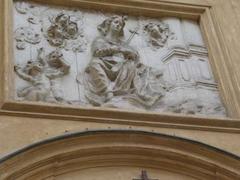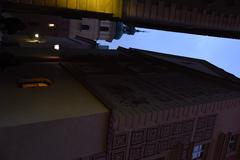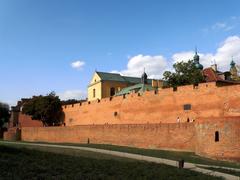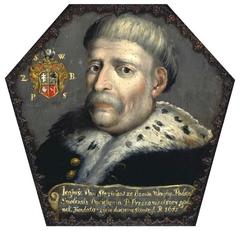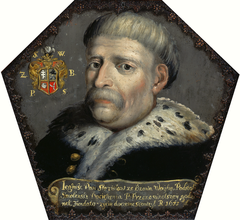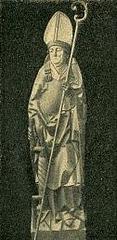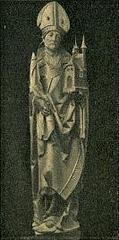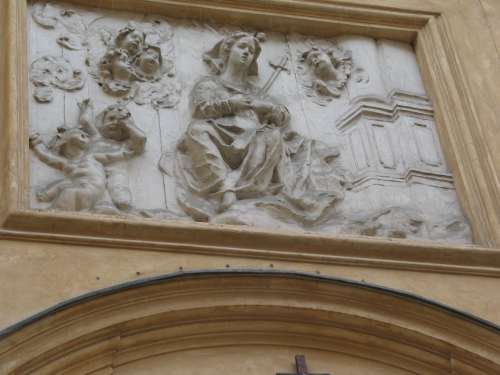
St. Martin’s Church Warsaw: Visiting Hours, Tickets, and Historical Sites Guide
Date: 15/06/2025
Introduction
St. Martin’s Church (Kościół św. Marcina) stands as one of Warsaw’s oldest and most significant historical landmarks. Established by the Augustinian order in the 14th century, the church has borne witness to the city’s evolution, from its Gothic roots and Baroque transformations to the devastation of World War II and its subsequent meticulous restoration. Located in the UNESCO-listed Old Town, St. Martin’s Church is not only a place of worship but also a symbol of Polish resilience, cultural identity, and community spirit (Evendo; Wikipedia; Tourist Secrets).
This comprehensive guide provides essential information for visitors—covering St. Martin’s Church Warsaw visiting hours, ticketing, architectural highlights, and practical travel tips. Whether you’re a history buff, architecture enthusiast, or simply exploring Warsaw, this resource will help you make the most of your visit.
Table of Contents
- Introduction
- Historical Overview
- Architectural Highlights
- Wartime Destruction and Reconstruction
- Role in Social and Political History
- Cultural and Community Life
- Visiting Hours, Tickets, and Accessibility
- Getting There and Nearby Attractions
- Visitor Etiquette and Tips
- Frequently Asked Questions (FAQ)
- Conclusion
- References
Historical Overview
Founded in 1353 by the Augustinians at the behest of Duke Siemowit III of Masovia, St. Martin’s Church originally featured a Gothic design. The church and adjacent monastery became central to spiritual life, education, and charity in medieval Warsaw. Over subsequent centuries, it underwent several renovations, most notably a Baroque transformation in the 18th century led by architect Karol Bay, after a devastating fire (Evendo).
Throughout its history, the church has withstood the tumult of wars and occupations, including severe damage during the Swedish Deluge and near-total destruction in World War II. Its story mirrors the broader narrative of Warsaw itself—endurance, loss, and renewal (Tourist Secrets).
Architectural Highlights
Exterior:
The current Baroque façade, reconstructed after WWII, features elegant pilasters, a central pediment, and a modest bell tower that stands out on Piwna Street. The creamy hues and decorative stonework reflect the artistic tastes of 17th- and 18th-century Warsaw (Wikipedia).
Interior:
Postwar restoration created a minimalist, contemplative space marked by whitewashed walls and modern stained glass windows. The basilica layout—with a central nave and side aisles—invites quiet reflection. Noteworthy features include the Chapel of Our Lady of Consolation, the Chapel of Jesus Christ, and the Chapel of St. Francis with its polychromed Virgin Mary and Child (Travelling Camera; Wikipedia).
Wartime Destruction and Reconstruction
St. Martin’s Church suffered catastrophic damage during the 1944 Warsaw Uprising when it was almost entirely destroyed. The postwar reconstruction in the 1950s prioritized restoring its Baroque appearance while modernizing the interior. This effort became a symbol of Warsaw’s determination to reclaim its heritage, using historic documents and photographs to guide the painstaking process (World Wanderings; Evendo).
Role in Social and Political History
Beyond its religious function, St. Martin’s Church played a pivotal role in Poland’s 20th-century political landscape. It was the site of the first meeting of the Workers’ Defense Committee (KOR) in 1976—a foundational moment for the Solidarity movement and the country’s eventual transition to democracy (VoiceMap). Memorial plaques inside the church honor those who fought for freedom and justice.
Cultural and Community Life
Today, St. Martin’s Church is an active parish and a vibrant cultural venue. Its renowned acoustics make it a popular location for classical concerts, especially during the Warsaw Autumn Festival. The church regularly hosts art exhibitions, lectures, and community events, reinforcing its role as a cultural beacon in the Old Town (Evendo; GPSmyCity).
Visiting Hours, Tickets, and Accessibility
-
Visiting Hours:
- Monday to Saturday: 9:00 AM – 6:00 PM
- Sundays: 10:00 AM – 5:00 PM
(Hours may vary during religious holidays and special events. It is advisable to check the official website or parish office for up-to-date information.)
-
Tickets and Entrance Fees:
- Entry to St. Martin’s Church is free of charge. Donations are welcome to support maintenance and cultural programming.
-
Guided Tours:
- Guided tours are available upon request, often via local tour operators or Warsaw’s tourist information centers. Audio guides in multiple languages can enhance your visit.
-
Accessibility:
- The church is wheelchair accessible via the main entrance, with ramps and seating for visitors with mobility needs. Assistance dogs are permitted.
Getting There and Nearby Attractions
St. Martin’s Church is centrally located at ul. Piwna 9/11 in Warsaw’s Old Town. The area is pedestrian-friendly, close to major landmarks such as:
- Old Town Market Square
- Royal Castle
- Barbican
- Museum of Warsaw
Public transport options include trams and buses from Warsaw Central Station and the Palace of Culture and Science (GPSmyCity). The surrounding streets offer charming cafés and excellent opportunities for photography.
Visitor Etiquette and Tips
- Respect the Sacred Space: Maintain silence, especially during religious services. Dress modestly—covering shoulders and knees is recommended.
- Photography: Allowed without flash. Be especially discreet during ceremonies.
- Best Times to Visit: Weekday mornings or late afternoons are quieter. For a lively experience, visit during St. Martin’s Day (November 11) or Easter.
- Language: Services are primarily in Polish, but informational materials and some staff can assist in English.
- Safety: Warsaw’s Old Town is safe, but be vigilant against pickpocketing during crowded events.
Frequently Asked Questions (FAQ)
Q: What are the visiting hours of St. Martin’s Church?
A: Monday–Saturday 9:00 AM–6:00 PM; Sunday 10:00 AM–5:00 PM. Hours may vary on holidays.
Q: Is there an entrance fee?
A: No, entry is free; donations are welcome.
Q: Are guided tours available?
A: Yes, by arrangement through local tour operators or the parish.
Q: Is the church accessible for wheelchair users?
A: Yes, it is accessible via ramps at the main entrance.
Q: Can I take photos inside?
A: Photography is allowed without flash; please respect worshippers.
Conclusion
St. Martin’s Church is more than a historical monument—it is a living part of Warsaw’s identity, a testament to resilience, faith, and community engagement. Whether you’re drawn by its architectural beauty, fascinated by its role in Poland’s history, or seeking a quiet place for reflection, St. Martin’s Church offers a profound and rewarding experience.
For up-to-date visiting information, special events, and guided tours, consult official travel platforms or the Audiala app. Enhance your Warsaw journey by exploring this and other gems of the Old Town.
